Abstract
Using a variety of sporeforming and nonsporeforming anaerobic bacteria, we compared 10 differential agar media of the Anaerobe-Tek (A/T) system recently marketed by Flow Laboratories, Inc. (McLean, Va.) with 10 comparable media in Presumpto quadrant plates (Presumpto 1, 2, and 3) developed by the Centers for Disease Control Anaerobic Bacteria Branch. The A/T identification system was evaluated by comparing the species identity of anaerobes determined as recommended by the manufacturer's instruction manual with the identity of the strains obtained by the Centers for Disease Control Anaerobe Reference Laboratory by using conventional procedures. We also compared reactions obtained with the Presumpto plates with a chopped meat glucose broth culture as a source of inoculum with those obtained by using a turbid cell suspension from growth on blood agar as inoculum. The agreement of results for the 16 characteristics compared ranged from 92.8 to 100%. Comparison of test results obtained with 10 media in the Presumpto plate and A/T systems from the examination of 223 strains of anaerobes, representing 54 different taxa, showed the following agreement between A/T and CDC systems: catalase production, esculin hydrolysis, glucose fermentation, and lecithinase production (100%); inhibition of growth by bile agar (99.6%); lipase production (99%); DNase (98.7%); fermentation of lactose and mannitol (98.2%); starch hydrolysis (96.9%); gelatin hydrolysis (96.4%); and casein hydrolysis (94.6%). Of the 204 strains of common anaerobes tested with the A/T system, only 70% were correctly identified to the species level. However, several strains could have been identified correctly with the A/T system if data on certain other characteristics had been included in the A/T data base.
Full text
PDF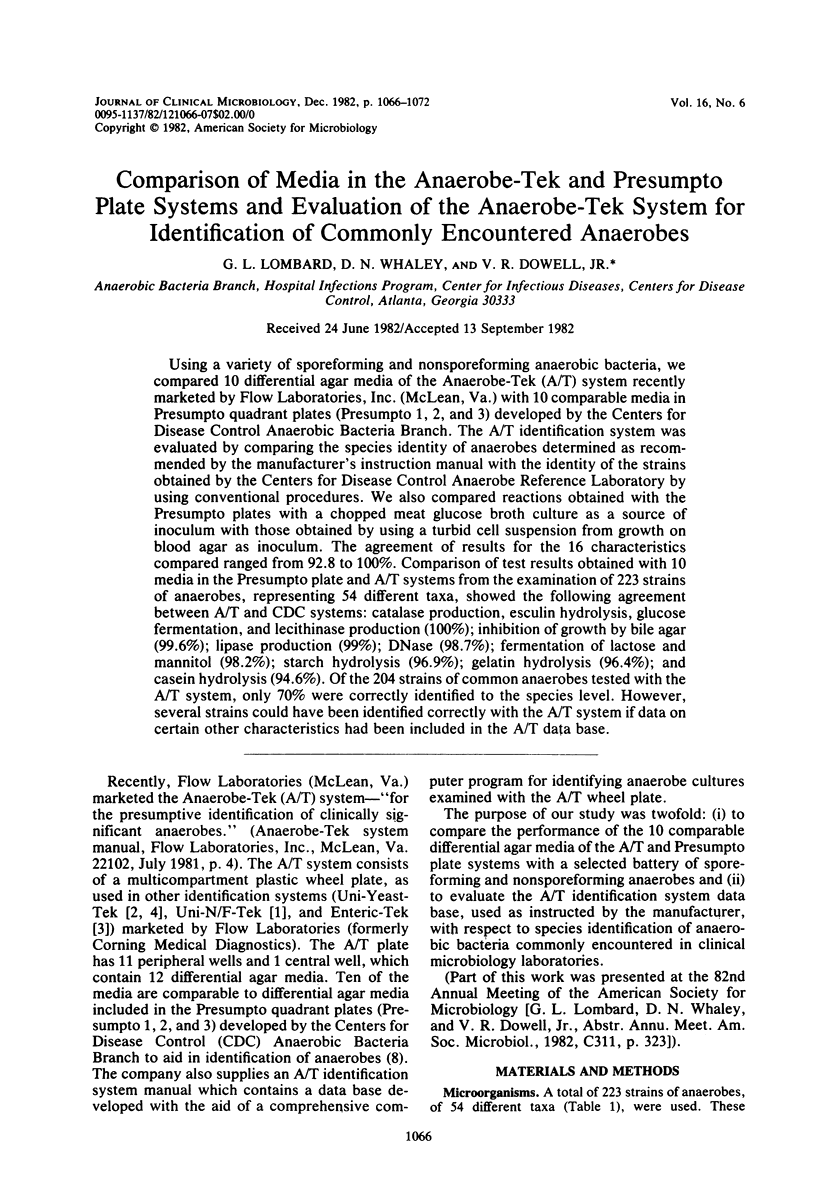
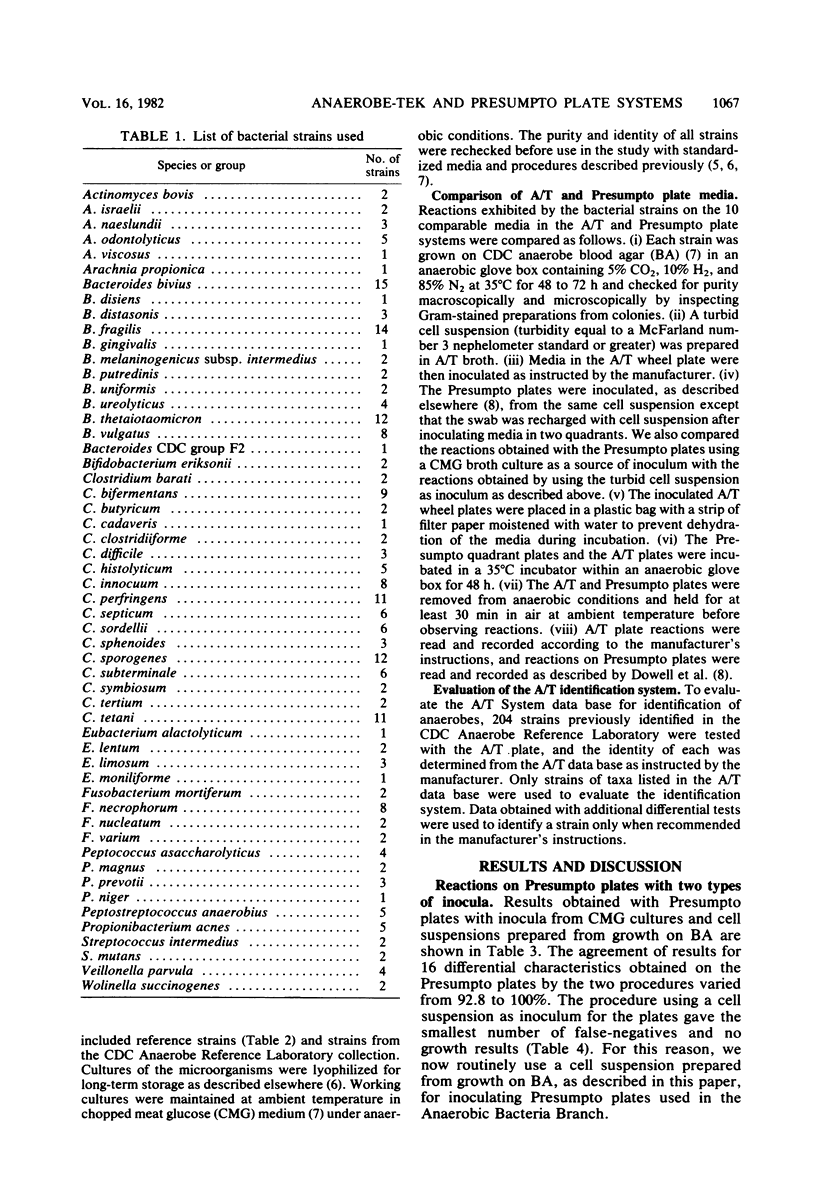
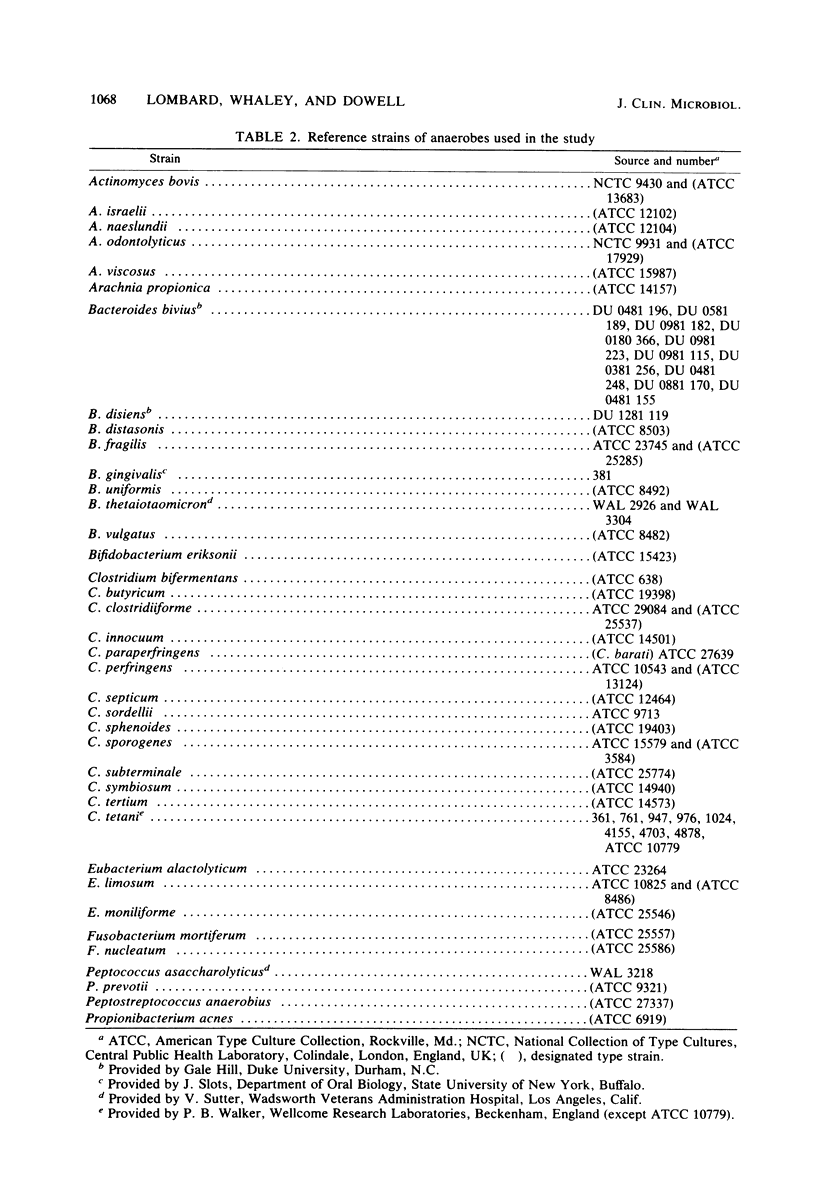
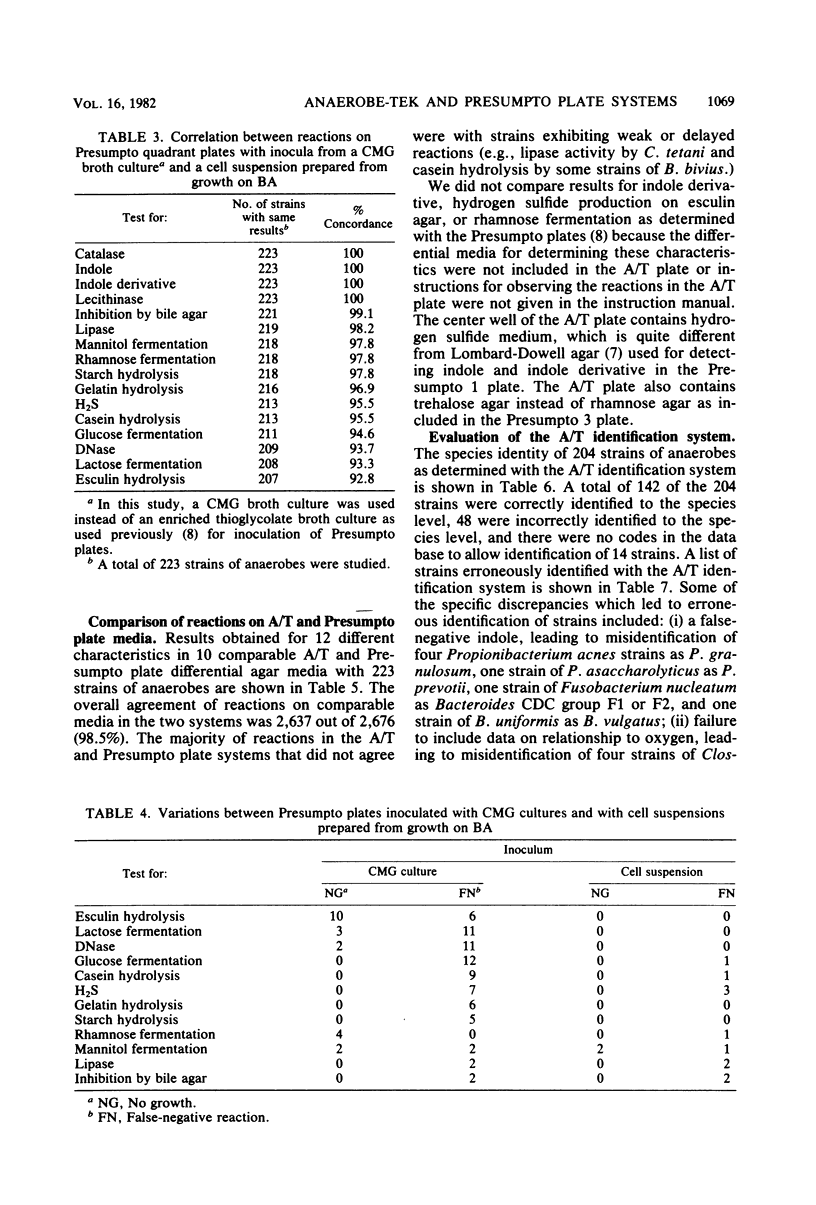

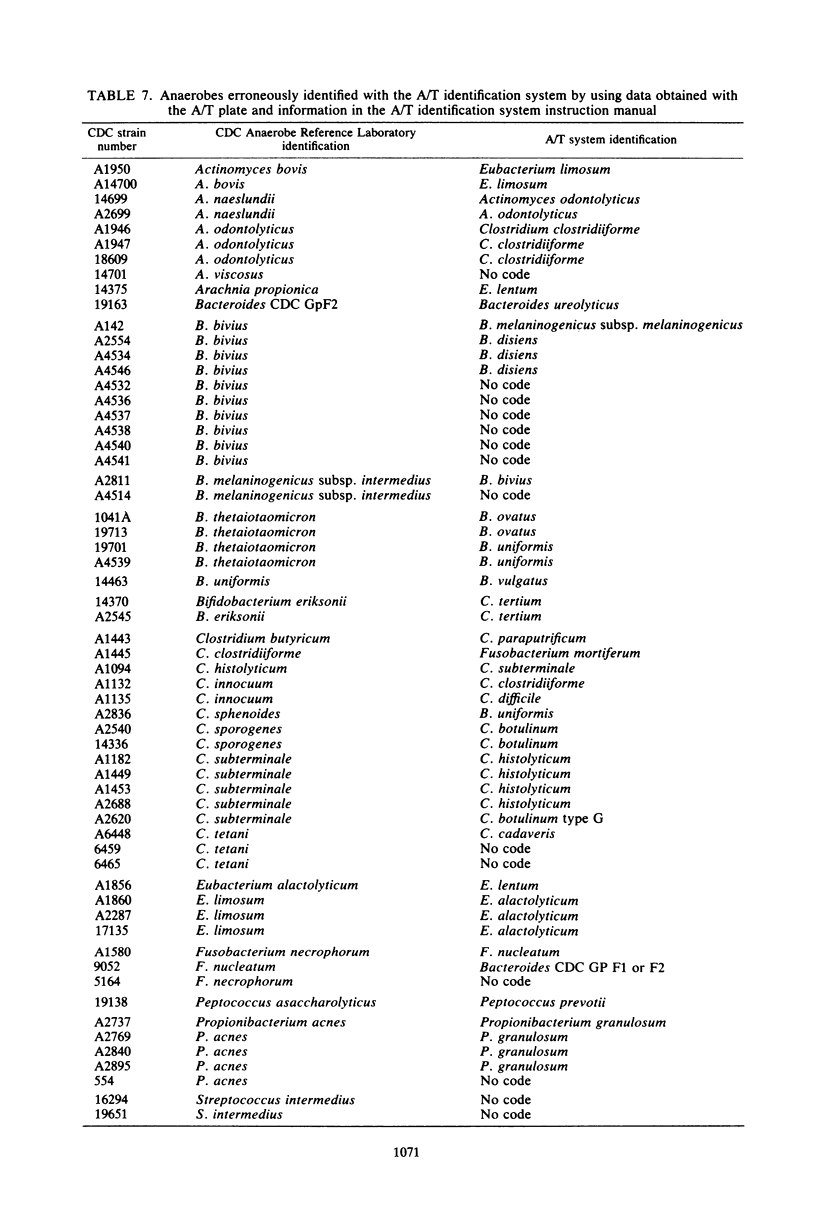
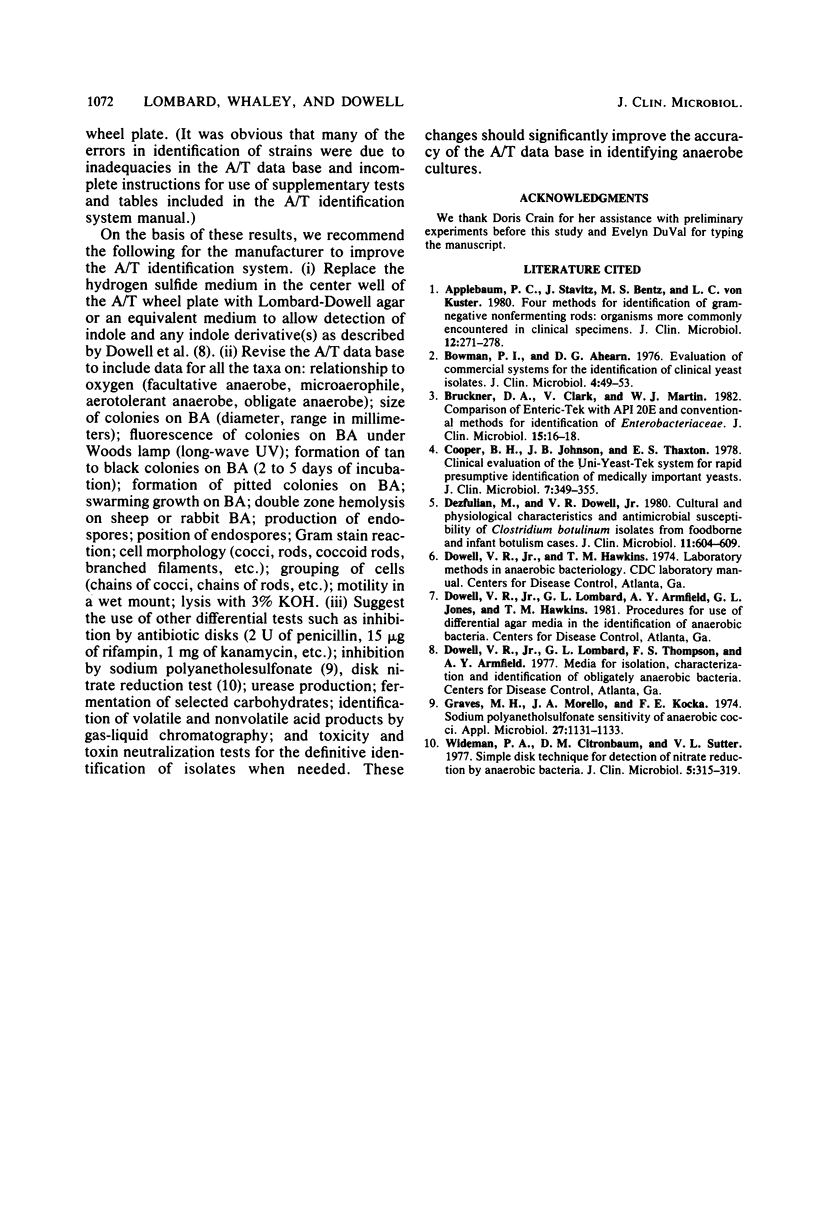
Selected References
These references are in PubMed. This may not be the complete list of references from this article.
- Appelbaum P. C., Stavitz J., Bentz M. S., von Kuster L. C. Four methods for identification of gram-negative nonfermenting rods: organisms more commonly encountered in clinical specimens. J Clin Microbiol. 1980 Aug;12(2):271–278. doi: 10.1128/jcm.12.2.271-278.1980. [DOI] [PMC free article] [PubMed] [Google Scholar]
- Bowman P. I., Ahearn D. G. Evaluation of commercial systems for the identification of clinical yeast isolates. J Clin Microbiol. 1976 Jul;4(1):49–53. doi: 10.1128/jcm.4.1.49-53.1976. [DOI] [PMC free article] [PubMed] [Google Scholar]
- Bruckner D. A., Clark V., Martin W. J. Comparison of Enteric-Tek with API 20E and conventional methods for identification of Enterobacteriaceae. J Clin Microbiol. 1982 Jan;15(1):16–18. doi: 10.1128/jcm.15.1.16-18.1982. [DOI] [PMC free article] [PubMed] [Google Scholar]
- Cooper B. H., Johnson J. B., Thaxton E. S. Clinical evaluation of the Uni-Yeast-Tek system for rapid presumptive identification of medically important yeasts. J Clin Microbiol. 1978 Apr;7(4):349–355. doi: 10.1128/jcm.7.4.349-355.1978. [DOI] [PMC free article] [PubMed] [Google Scholar]
- Dezfulian M., Dowell V. R., Jr Cultural and physiological characteristics and antimicrobial susceptibility of Clostridium botulinum isolates from foodborne and infant botulism cases. J Clin Microbiol. 1980 Jun;11(6):604–609. doi: 10.1128/jcm.11.6.604-609.1980. [DOI] [PMC free article] [PubMed] [Google Scholar]
- Graves M. H., Morello J. A., Kocka F. E. Sodium polyanethol sulfonate sensitivity of anaerobic cocci. Appl Microbiol. 1974 Jun;27(6):1131–1133. doi: 10.1128/am.27.6.1131-1133.1974. [DOI] [PMC free article] [PubMed] [Google Scholar]
- Wideman P. A., Citronbaum D. M., Sutter V. L. Simple disk technique for detection of nitrate reduction by anaerobic bacteria. J Clin Microbiol. 1977 Mar;5(3):315–319. doi: 10.1128/jcm.5.3.315-319.1977. [DOI] [PMC free article] [PubMed] [Google Scholar]


